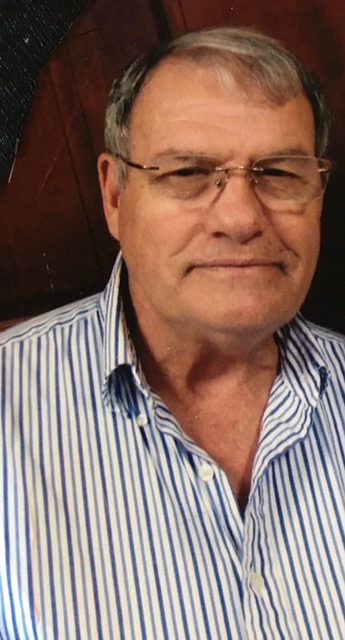Someone once said, “Things are the way they are because they got that way.”

That statement fits about any situation, but it has a negative connotation. For me, it steps up the awareness that small communities are struggling to survive and maintain their existence and the urgency of finding solutions to their needs. Rural communities are not on the radar screen of most politicians, yet the people who live in small towns are the heart and soul of America.
Those who have had the privilege of growing up and living in a small, rural community understand the unique sense of belonging that exists there. It is the feeling of having an extended family that is larger than your own. It is knowing that you are an important part of the community, and if you miss a game-winning basketball goal or you make a mistake in life, you are still cared for and encouraged, no matter what.
Small communities matter because the people who live there matter. Rural communities are the birthplace of leaders. Each community is unique and has its own history and traditions that make it special and set it apart from all other towns. There is no way to measure that value and what it means to America.
Why are so many struggling?
Remembering a series of events will better explain why “they got that way.” There are multiple factors. During the first part of the 1960s, small towns were thriving as people did most of their shopping at home. They sold their produce locally and bought their groceries, feed, seed and supplies from the local stores.
Believe it or not, parking was a major problem in many towns on Saturday afternoons. In the mid-1960s, we began to see legislative pressure to consolidate schools across the High Plains region, even though studies showed that more than half of the students listed on the President’s and Dean’s Honor Rolls in colleges and universities came from small, rural schools.
Consolidation was the end of many small communities, with the result being two or three larger small towns in a county in place of seven or eight. Then came the emergence of the large discount stores in the regional towns. Air conditioning in cars made it more comfortable to drive to the nearest regional town, shop at the discount store, have a meal, go to the movie, and buy fuel and other items.
This put pressure on the local hardware store, grocery store, gas station and other businesses. It was the start of a trend that has never reversed. The exodus of people increased in some places faster than the departure of people during the “Dust Bowl.” For young people, moving away to some other more “glamorous” place became a status symbol.
Local business owners grew old, and when the time came to retire and sell their businesses, their profits had declined, and young people were not interested in staying. Local businesses such as hardware stores, clothing stores and variety stores liquidated their inventory and left empty buildings on Main Street with some still there that remind us of good times gone by. Other events have added to the loss of people, business and jobs.
No easy answers
Communities face a myriad of problems ranging from deteriorating infrastructure to lack of housing, lack of jobs and the struggles of keeping basic goods and services businesses viable in the town. The dilemma that we are in just “snuck” up on us over time, and now “things are the way they are because they got that way.”
There are more than 16,000 small towns in America with fewer than 1,000 people, with many in the High Plains Region: Kansas—562, Texas—847, Colorado—199, Oklahoma—515 and Nebraska —250, to name a few. Not all are struggling as some have found answers to their situation in one way or another, and they serve as examples to others that recovery is possible.
There is no “magic wand” that can be waved to solve the issues, but there are some practical ways to start to improve life.
It starts with planning
More than 75% of communities do not have a plan for economic recovery, and a similar percentage have not conducted an asset study. Communities that have had and are having success in rebuilding have started with an asset study, followed by creating a plan, and then by implementing the plan. It takes town participation to “figure out” all the assets that are available for economic recovery.
When people in a town put their heads together, not only does a list of previously unknown assets usually turn up, but something dynamic happens to that community. They come closer together, old friendships are renewed, and new friendships evolve.
Communities that have decided to study the assets they have for economic development look at their infrastructure, human resource assets, health and safety assets, educational assets, business, agriculture, opportunities for tourism and natural resource assets. Many times, it comes down to natural resources and the land.
Finding your niche
They may find a high value, unique crop can be grown in the area, or sources of biomass may be converted to energy. Bentonite clay deposits, salt deposits, sand deposits and gypsum deposits may exist that can lead to new jobs through attracting a processor, and many other possibilities will surface out of a “brainstorming” session. Asset studies also reveal what a town doesn’t have.
All of these can then be put into one-year and five-year plans, and those become the strategy for moving forward. The answer for many may be found in utilizing natural resources in one way or another to stimulate jobs and growth.
Noted natural resource economist Arnold Paulson said, “All new real wealth in an economic system comes from the land.”
A community is an economic system. We must defy those who drive across the country and say rural communities are dying, never to return. They do not know what lies therein, and they do not understand the resilience and the courage and the will of rural people to never give up.
Tom Lucas can be reached at (580) 727-4397 or [email protected].


